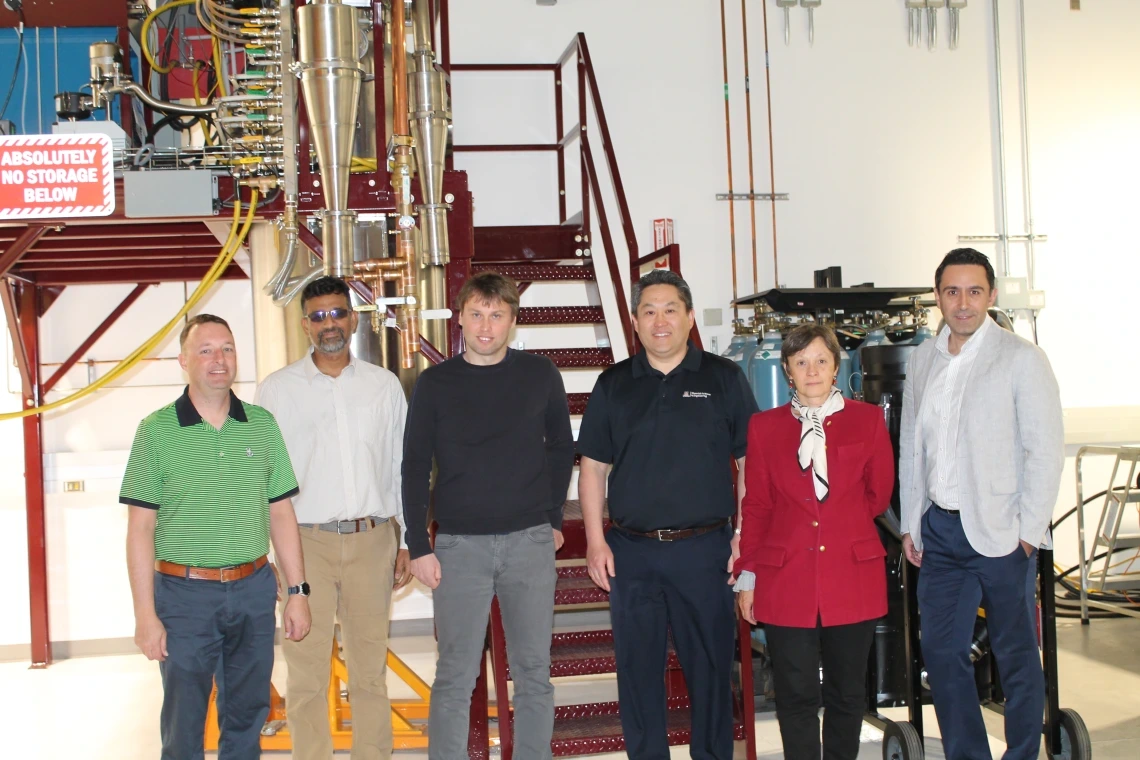Kavan Hazeli joins research effort to break hypersonic barriers

The Mach-X research team (from left, Andrew Wessman, Krishna Muralidharan, Benoit Revil-Baudard, Sammy Tin, Oana Cazacu and Kavan Hazeli) is working for the first time in the university’s Applied Research Building.
A University of Arizona engineering effort to make hypersonic vehicles faster and more affordable could deliver far-reaching outcomes. The U.S. Army awarded $3.1 million over two years to a research group led by Sammy Tin, the Patrick R. Taylor Endowed Department Leadership Chair for the Department of Materials Science and Engineering.
Tin and five U of A College of Engineering colleagues are exploring the use of multiple metallic alloys and additive manufacturing to enable fabrication of Mach-X – pronounced mock-ex – aerospace technologies as part of a federal governmental push. Mach-X vehicles will travel at speeds faster than Mach 5, which is five times the speed of sound and the hypersonic threshold.
The research team – which includes aerospace and mechanical engineering associate professor Kavan Hazeli, plus Department of Materials Science and Engineering faculty members Krishna Muralidharan, Oana Cazacu and Benoit Revil-Baudard – will process two alloys and study their capacity to be shaped into the complex structures needed for ultrafast aircraft.
The two-year project will advance additional national priorities and bring the Army closer to deploying Mach-X vehicles, said David W. Hahn, the Craig M. Berge Dean of the College of Engineering.
